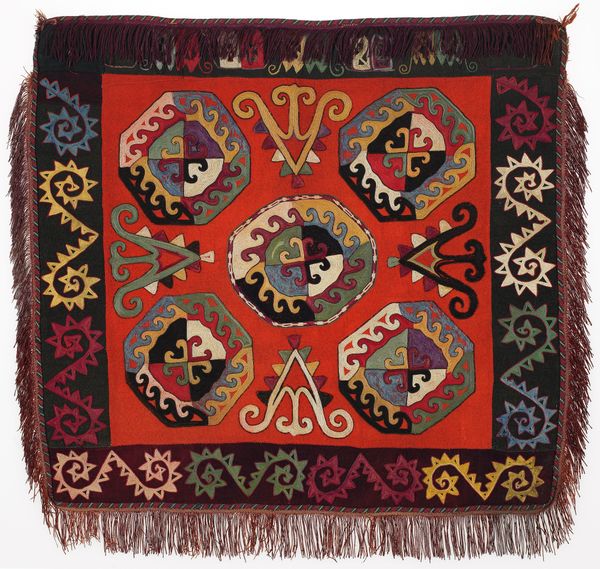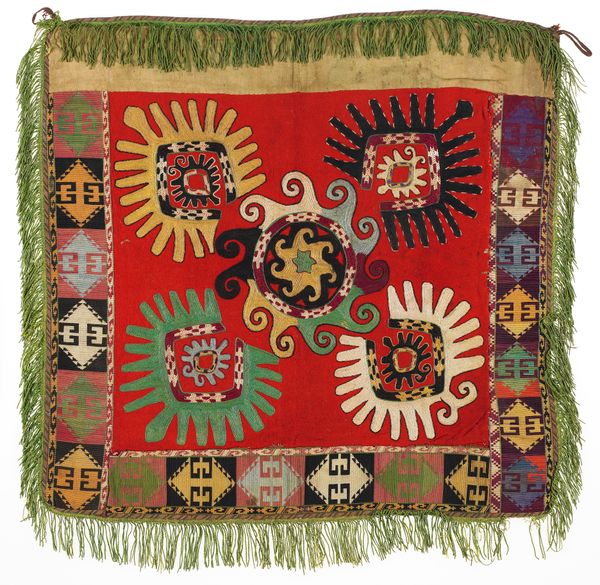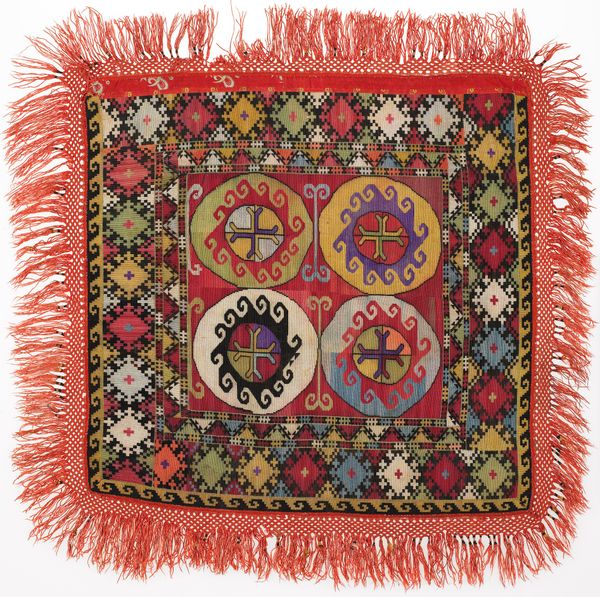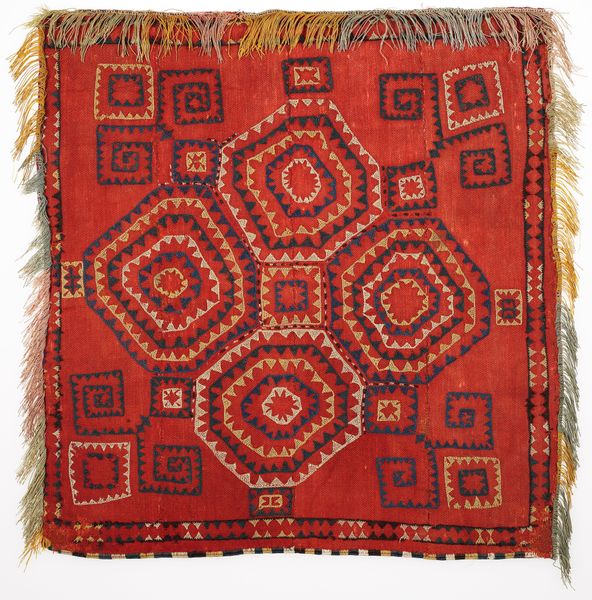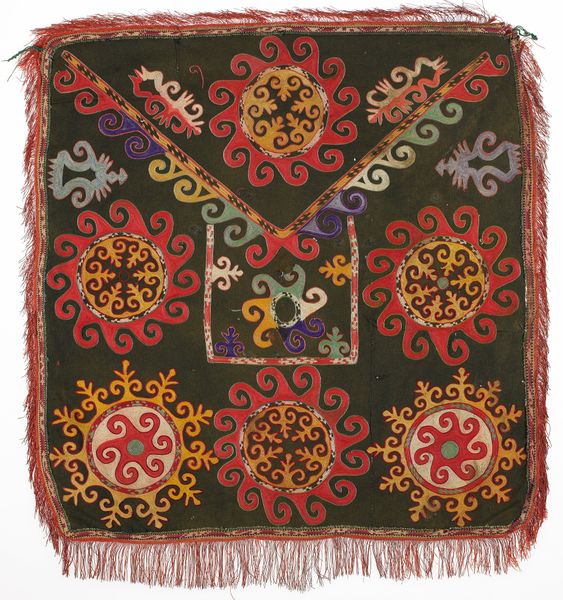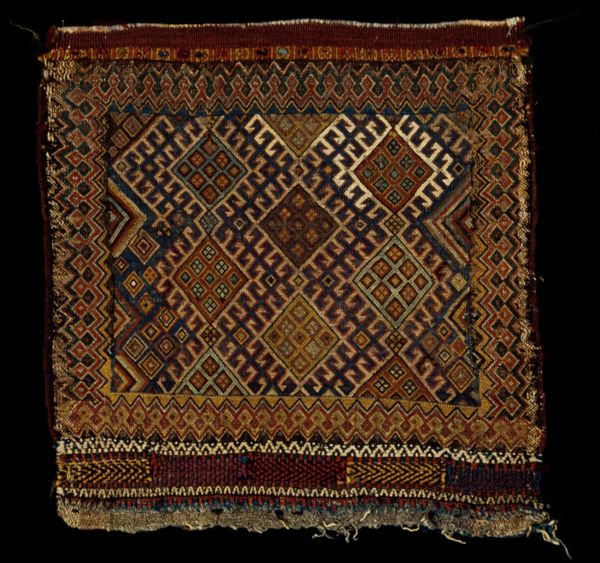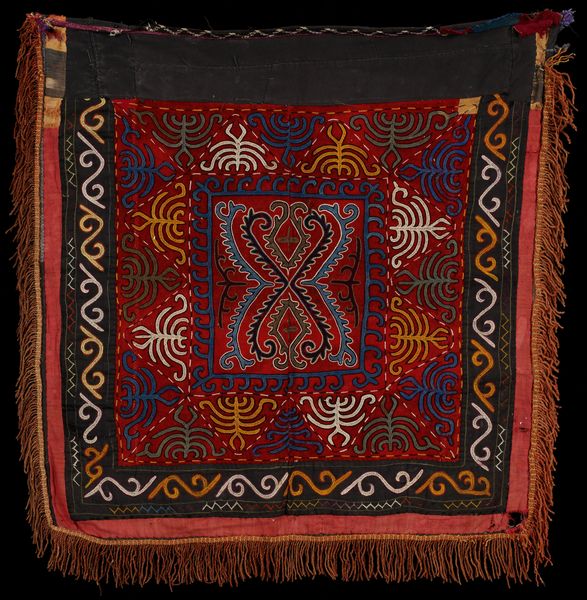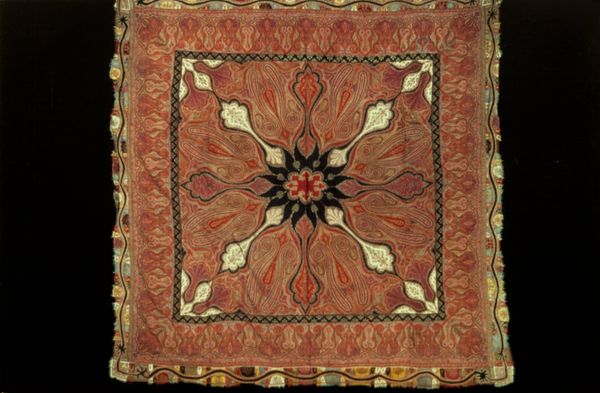
weaving, textile
#
asian-art
#
weaving
#
textile
#
geometric pattern
#
geometric
Dimensions: 36 x 36 in. (91.44 x 91.44 cm)
Copyright: Public Domain
Curator: Here we have a Kyrgyz tent hanging, likely from the 19th century, now residing here at the Minneapolis Institute of Art. It's a vibrant textile, combining cotton and silk. Editor: My first thought is about the handwork that went into this; imagine the hours spent stitching these intricate patterns. The bright red background really pops. Curator: Absolutely. These types of textiles, often called "tush kyiz," served a very specific purpose. Beyond decoration, they acted as a backdrop for family life, laden with symbolic meaning woven directly into the design. See how the floral motifs spiral out from the center. Editor: Are these specific flower types? Because it feels very deliberate, not just decorative. Curator: Precisely. While some motifs may be stylized representations of local flora, it’s less about botanical accuracy and more about symbolic resonance. Flowers are commonly linked to themes of fertility, prosperity, and familial well-being. Notice the recurring circular patterns which could allude to the cyclical nature of life or perhaps represent cosmological concepts central to Kyrgyz culture. Editor: And how different colored silks and cottons come together. I'm struck by how a seemingly simple medium—thread—can convey so much. You can almost feel the hands of the maker, their social position even, woven into the cloth. Did these materials have particular value, denoting status? Curator: In many Central Asian cultures, textiles signified wealth and status. High-quality silk, especially, would have been a valuable commodity. But beyond monetary value, these textiles represented something deeper: a lineage, a cultural inheritance passed down through generations. They were integral to ceremonies, celebrations, marking key life transitions. Editor: It gives you pause, doesn't it? To think that this, originally a piece of a family’s most intimate, domestic space, now hangs in a museum. The change of context affects how we consider this cloth and reminds you how an object’s meaning and social roles also shifts. Curator: A profound thought. To view this object as it now lives at the Institute allows us to meditate on continuity and memory, to reflect on shared experiences encoded in motifs repeated across centuries, cultural objects that now weave these voices together with echoes of a story of family and culture long ago.
Comments
No comments
Be the first to comment and join the conversation on the ultimate creative platform.

